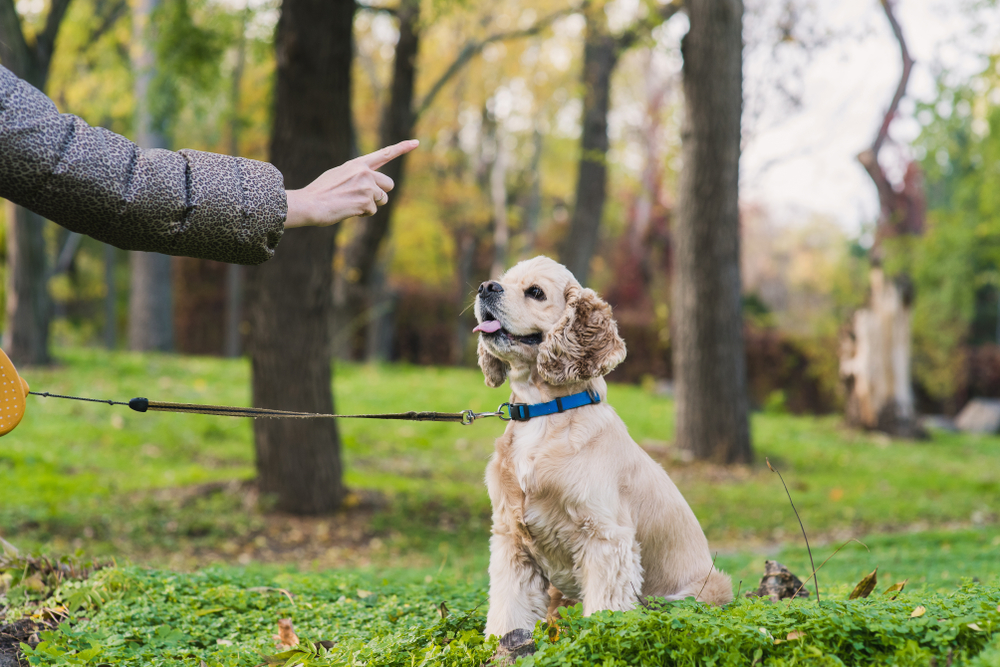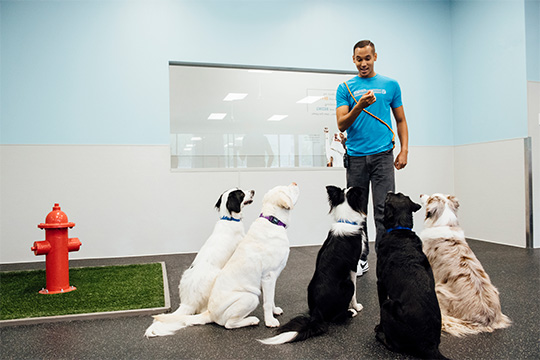Achieve Your Dog's Best Behavior with Expert Dog Training Services
Achieve Your Dog's Best Behavior with Expert Dog Training Services
Blog Article
Transform Your Canine's Habits With Proven Training Methods
Transforming your pet dog's habits needs a nuanced understanding of their specific characteristics and requirements, as well as the application of tested training methods. Uniformity in your training technique not only improves obedience but likewise fosters a deeper bond of depend on and respect in between you and your family pet.

Recognizing Dog Actions
Comprehending pet dog habits is important for effective training and communication between people and their canine companions. Pet dogs, as social pets, display a variety of actions influenced by genes, atmosphere, and experiences. Identifying these actions helps proprietors customize their training approaches to meet the specific demands of their canines.
Key elements of pet habits consist of body language, vocalizations, and social communications. A wagging tail usually suggests exhilaration, while a decreased head might signal submission or anxiety. Recognizing these signals can aid proprietors translate their canine's mood and react properly. Additionally, socialization plays an important role in forming habits; dogs that interact positively with other animals and various individuals are typically a lot more well-adjusted and adaptable.
Additionally, identifying stress signals-- such as evasion, panting, or pacing habits-- can stop rise into a lot more major concerns. Owners that are attuned to their dog's actions can produce a safe and nurturing atmosphere, promoting depend on and boosting the training procedure. Ultimately, a deep understanding of canine habits lays the foundation for an unified relationship and reliable training results, making sure both dogs and their owners prosper together.
Favorable Reinforcement Strategies
Positive support strategies are commonly recognized as one of the most efficient approaches for training pet dogs, cultivating a positive understanding environment. This strategy involves rewarding wanted actions with treats, praise, or play, thus encouraging the canine to duplicate those behaviors (Dog training). Unlike vindictive approaches, favorable support develops depend on and reinforces the bond in between the instructor and the pet
Rewards should be given immediately adhering to the wanted behavior to aid the pet make the connection. Consistency is additionally vital; using the exact same commands and incentives helps the pet dog comprehend what is anticipated.
It is necessary to keep in mind that positive reinforcement is not concerning bribery; rather, it is regarding strengthening good habits. Gradually, as the canine discovers to connect details actions with positive end results, the frequency of benefits can be progressively minimized, transitioning to spoken praise or intermittent rewards. This technique not just encourages obedience but likewise advertises a certain and satisfied canine, making training an extra enjoyable experience for both events entailed.
Addressing Typical Problems
Attending to typical issues throughout pet training is important for ensuring a successful and harmonious connection between the pet dog and its owner. Numerous dog proprietors run into behavioral challenges, such as excessive barking, jumping, and chain drawing. Comprehending the root causes of these habits is crucial for reliable training.
To reduce this, give ample physical exercise, mental stimulation, and chances for social interaction with both human beings and other canines. Training the pet to rest upon welcoming can reroute this actions positively.
Chain drawing is another common problem, often resulting from a canine's eagerness to explore. Utilizing appropriate leash managing methods, incorporated with training procedures that urge loose-leash strolling, can considerably enhance this habits.
Additionally, issues like source securing or splitting up stress and anxiety need tailored strategies. Progressive desensitization and counter-conditioning can be efficient in resolving these obstacles. By identifying and proactively handling these common concerns, dog proprietors can promote a more enjoyable training experience and reinforce the bond with their canine buddies.
Consistency in Training
Uniformity is a foundation of effective pet dog training, as it establishes a clear structure for the pet dog to understand actions and assumptions. When commands, incentives, and hints are applied evenly, canines can quicker grasp what is called for of them. Irregular training can bring about complication, leading to undesirable actions that irritate both the trainer and the canine.
To accomplish uniformity, it is important that all members read review of the family follow the very same training methods. Using the exact same spoken signs and hand signals ensures that the pet dog obtains consistent messages. In addition, the timing of benefits and modifications must be constant; prompt support enhances the probability that the pet will link the behavior with the outcome.
Furthermore, developing a regimen can further enhance uniformity. Routine practice, coupled with structured schedules for feeding, strolling, and play, aid pets prepare for and comprehend their environment, making them more receptive to training. Inevitably, consistency promotes a complacency and depend on, encouraging pet dogs to learn extra properly. By devoting to an organized method, fitness instructors can advertise favorable behavior adjustments and grow a well-mannered buddy.
Building a Solid Bond
Just how can promoting a solid bond in between a dog and its proprietor improve the training experience? A strong relationship improved depend on and respect acts as the foundation for effective training. When a pet dog feels safe and secure in its link with its owner, it is most likely to exhibit positive habits and be receptive to learning. This bond urges the pet to involve totally in training sessions, as it checks out the owner as a source of assistance and assistance.

In addition, a reputable connection can lower stress and anxiety and behavior problems, as dogs are much less likely to act out when they feel comprehended and looked after. Prioritizing the advancement of a solid bond not only improves the training experience but also contributes to a happier and much more well-adjusted pet. Eventually, the journey of training changes right into a collaborative partnership, bring about lasting behavioral improvements.
Conclusion

Owners who are attuned to their dog's behavior can develop a caring and safe setting, cultivating depend on and boosting the training procedure. Ultimately, a deep understanding of canine actions lays the foundation for a harmonious connection and effective training results, making certain both pet dogs and their owners prosper together.
Addressing typical concerns throughout pet training is essential for guaranteeing a successful and unified connection in between the pet dog and its proprietor (Dog training).Uniformity is a keystone of reliable dog training, as it develops a clear structure for the dog to comprehend expectations and actions.In conclusion, transforming a pet's behavior via verified training methods needs an understanding of canine actions, the application of positive reinforcement methods, and a focus on uniformity
Report this page